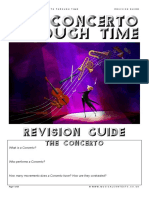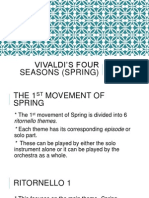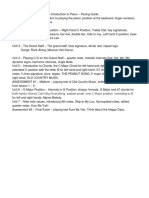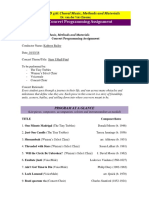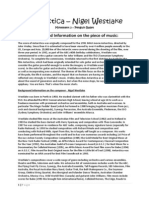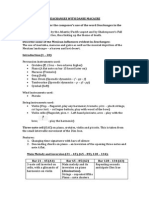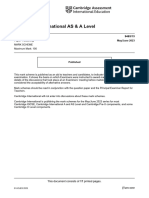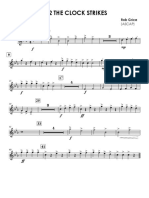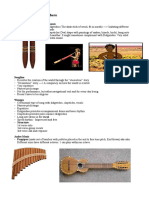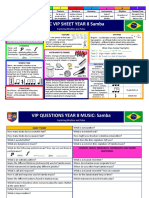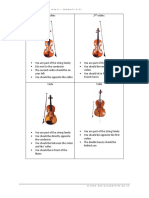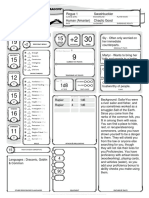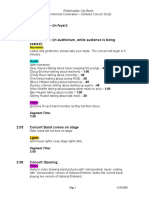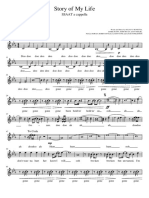GCSE Music - Rhythms of the World
Samba
This question is based on Area of Study 3 - Rhythms of the
World. You will hear an extract of music played three times.
1. Name three types of percussion instruments you can hear in the piece
(3).
____________________________________
____________________________________
____________________________________
2. What is the time signature in this piece? Circle one time signature (1).
2/4
3/8
6/4
12/8
3. How do the musicians know when to change section, start or stop? (2).
__________________________________________________________________________
_______________
__________________________________________________________________________
_______________
4. Describe the relationship between the whistle and the drums during
the introduction of the piece (1).
__________________________________________________________________________
_______________
5. Describe the texture of the rest of this piece (1).
__________________________________________________________________________
_______________
6. Give an example of an occasion where you might hear this type of
music (1).
�__________________________________________________________________________
_______________
7. Where does Samba music come from? (1).
__________________________________________________________________________
_______________
Extended Writing Question
8. Write a paragraph, using sentences, explaining how the music is
typical of Samba. You can refer to texture, melody, instrumentation,
tempo and rhythm.
__________________________________________________________________________
_______________
__________________________________________________________________________
_______________
__________________________________________________________________________
_______________
__________________________________________________________________________
_______________
__________________________________________________________________________
_______________
__________________________________________________________________________
_______________
__________________________________________________________________________
_______________
__________________________________________________________________________
_______________
__________________________________________________________________________
�_______________
__________________________________________________________________________
_______________
__________________________________________________________________________
_______________
__________________________________________________________________________
_______________
__________________________________________________________________________
_______________
__________________________________________________________________________
_______________
__________________________________________________________________________
_______________
__________________________________________________________________________
_______________
__________________________________________________________________________
_______________
__________________________________________________________________________
_______________
__________________________________________________________________________
_______________
Feedback:
/19
You may use this page to make notes in preparation for your answer to
Question 8.
�This page will not be marked.
GCSE Music - Rhythms of the World - ANSWERS
�Samba
This question is based on Area of Study 3 - Rhythms of the
World.
Track: Song - Beginning Batucada
Artist: Tocanto Brazilian Music Ensemble
Album: A Musical Journey Throughout Brazil
You will hear an extract of music played three times.
1
Name three types of percussion instruments you can hear in the piece
(3).
Drums, shakers, bells (credit names of individual instruments)
2. What is the time signature in this piece? Circle one time signature (1).
2/4
3/8
6/4
12/8
3. How do the musicians know when to change section, start or stop? (2).
Led by a musician playing the repinique, blowing a whistle, visual cues.
4. Describe the relationship between the whistle and the drums during
the introduction of the piece (1).
Call and response
5. Describe the texture of the rest of this piece (1).
Several layers of percussion, polyrhythmic.
6. Give an example of an occasion where you might hear this type of
music (1).
Carnival, street dance
7. Where does Samba music come from? (1).
Brazil
�Extended Writing Question
8. Write a paragraph, using sentences, explaining how the music is
typical of Samba. You can refer to texture, melody, instrumentation,
tempo and rhythm. (9)
A list of features or musical elements will not access more than 4 marks,
prose is required.
Levels of response
7-9 marks: A good range of points are made from the indicative content,
showing a good level of understanding. The response is expressed
clearly, using appropriate terminology with accurate spelling,
punctuation and grammar.
4-6 marks: Several points are made from the indicative content showing
some understanding with supporting links. The response shows some
organisation and structure but may contain some errors of spelling,
punctuation and grammar.
1-3 marks: A limited number of points are made from the indicative
content. The response lacks organisation, structure and accuracy of
spelling, punctuation and grammar.
0 marks: No response or no response worthy of credit.
NR: No response.
Give credit to any other suitable answers as appropriate.
Correct responses:
Use of syncopation
Cross-rhythms
Description of instruments heard
Changes in texture and layering
Explanation of carnival feel and atmosphere - shouting and calling
Use of whistle to signify changes
Call and response
Use of triplet and dotted rhythms

